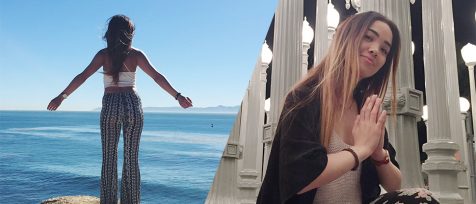
Points
All points through Week 4 are now up on BeachBoard. The total points possible so far is 204. Here’s what you should have to be on pace for each grade level:
184 points = “A” pace – 96 peeps
164 points = “B” pace – 11 peeps
144 points = “C” pace – 13 peeps
124 points = “D” pace – 2 peep
123 & below = “F” pace – 9 peeps
Lots of you got full credit on everything. Some of you got more than full credit. And some got less. Ways some got less than full credit:
- Not posting activities.
- Too short, not analytic posts
- Poor post names
To remember the scoring criteria, visit Syllabus > Rubrics

Leaderboard
- Veronica Meza – 282
- Marina Barnes – 280
- Jairo Ubeda – 273
- Sophia Guthrie – 267
- Amanda Bjornstad – 266
- SteevieLee Nabors – 260
- Jeremy Lai Thin Feng – 247
- Julyssa Juarez – 246
- Sierra Putman – 242
- Rogelio Avina – 242
Winter Shenanigans: A Road Trip Video from Jeremy Lai on Vimeo.
Arts Funding
For this week’s activity you get to look at Arts Funding. In the past that might have meant patronage from a King or a Pope. The Medici family in Florence was instrumental in The Renaissance. More recently wealthy patrons like Californian Eli Broad or Londoner Charles Saatchi have been enormously influential in what art gets made and seen. Today in the 21st century we also have new forms of networked or perhaps populist funding like Kickstarter. This week you get to explore Kickstarter and get an idea how it works and what goes on there. You can even get EC for doing your own Kickstarter if you choose to. Read all about it on our Kickstarter page


Artist Tags
Be sure to tag your artist posts!
SOA Galleries – Wk 5 – 15-19 Feb
Gatov West:
Dianna Franco, BFA, D&P
Dianna Franco explores the relationship between nature and civilizations through her large and small-scale abstract paintings.

From Diana:
I am a senior undergraduate Painting Bachelors of Fine Arts student.
The paintings in my exhibition are based on the relationships between nature and civilizations found from the micro to macro level in psychology and science. I am inspired by how nature and civilizations are always in flux with each other; therefore, in my paintings I explored how the inner parts of nature and civilizations can affect the outside, and I explored how the outer parts of these areas can affect the inside. I used saturated and neutral colors to explore the inner and outer areas; additionally, I used thick and thin paint to explore the varieties of weight found in nature and civilizations.

Gatov East:
Metals Group Show
The Metals group show features a variety of student work utilizing copper, brass, silver, steel and found objects.
Merlino Gallery:
Samuel Jernigan, Ceramics
Samuel Jernigan’s ceramic sculptures combine aesthetics of children’s toys and Giacometti figures and comments on the systems of value and desire.
Dutzi Gallery:
Krakowski, Sculpture
Werby Gallery:
Drawing & Painting Club
The Drawing and Painting Club’s exhibit is a juried show featuring selected works from BFA and MFA students and the jurors themselves.
From the Artists
A message from Liz Talbot:
We are the two students whom you spoke with last Thursday during the gallery interviews regarding the ways your students approached us. You invited us to speak to your class Tuesday, but we are both unavailable that morning, having allotted our time off work for the week of our exhibition. For the sake of convenience and not neglecting your invitation, we have briefed our advice and hope you can incorporate this into future lectures that will help your students and the artists being interviewed.
The first round of students repeatedly asked us questions that could be answered by reading the vinyl lettering title of our show, our names printed below the title, the artist statement, and the list of works. Though some galleries do not use statements or lists, the requirement by the SOA to have an artist statement accompany the exhibition is meant to help our peers and your students better understand our purpose as artists, especially since we all come from varied art backgrounds. You as the instructor understand that, but this should be stressed to your students to avoid asking redundant questions and the particular student who told us “I don’t want to have to read all that” when we told him the answers to his questions were in the artist statement.
Though many of the students asking these redundant questions did not ask them in a rude way (with the exception of the before mentioned student), it is inherently rude to come into our gallery space, when we are doing the class the favor of opening early, without breifing the students on how to behave and look critically at the gallery/work in order to formulate meaningful and thougthful questions.
The last waves of students that did take the time to go back to read the artist statement and list of works were able to conduct interviews based on their observation and interpretations that would better help them write their responses and experiences. This is the kind of behavior expected in a gallery setting.
We hope your students take full advantage of the inclusion of the artist statement and information provided to help broaden the experience of going to art galleries, both on campus and throughout the art world.
Thank you for your time


Comments? Questions? What great art did you see, make, or experience today?